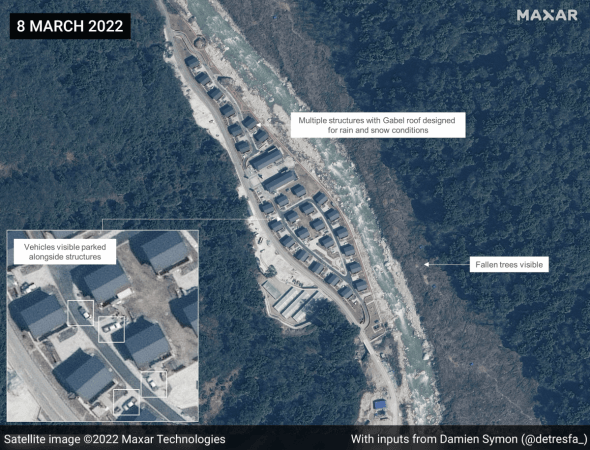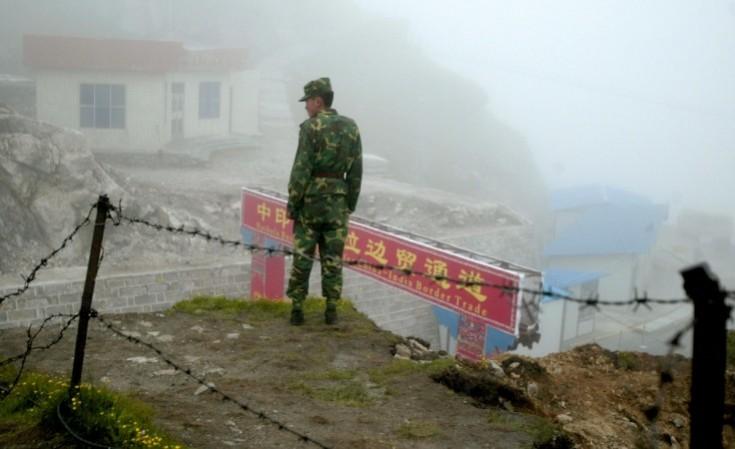In a seriously alarming situation for India, a Chinese hamlet that was built 9 km east of the Doklam plateau, where Indian and Chinese forces clashed in 2017, is now entirely populated, with automobiles parked at almost every residence. The village, which Beijing refers to as Pangda, is notable for being entirely within Bhutanese territory. Part of China's huge land grab in Bhutan is the perfectly delineated all-weather highway that runs beside Pangda. This crosses the Amo Chu river, which flows quickly, for 10 kilometres into Bhutanese territory.
Indian forces are at risk from Chinese forces entering a vital crest on the neighbouring Doklam plateau because of construction along the Amo Chu. Construction along the Amo Chu puts Indian forces at risk of Chinese forces gaining access to a strategic crest on the nearby Doklam plateau. They would have a clear view of India's critical Siliguri corridor, a tiny sliver of land connecting the northeastern states to the rest of the nation, thanks to this.

According to a report in NDTV, China has accelerated the building of a third hamlet or habitation further South, and fresh satellite photographs from Maxar show that a second village in the Amo Chu river valley is now essentially finished. At the location of this third village, a bridge has been built over the Amo Chu, and there is obviously excavation work going on. Here, you can see the six buildings' foundations.
Construction in the strategically sensitive location
Beijing's largest land grab, which has been noted in the past year, is around 30 km south of China's village and road building activity in the Amo Chu river valley. On a 110 square km plot of land that Beijing disputes, six communities have been built in a previously deserted area. The Indian defences in Sikkim are under pressure from all of these settlements.

The Bhutanese developments come while India is still attempting to convince China to leave the positions it has held in Ladakh since May 2020. There have been 16 rounds of negotiations so far, and the final round, held on Sunday, did not appear to make any progress.

















